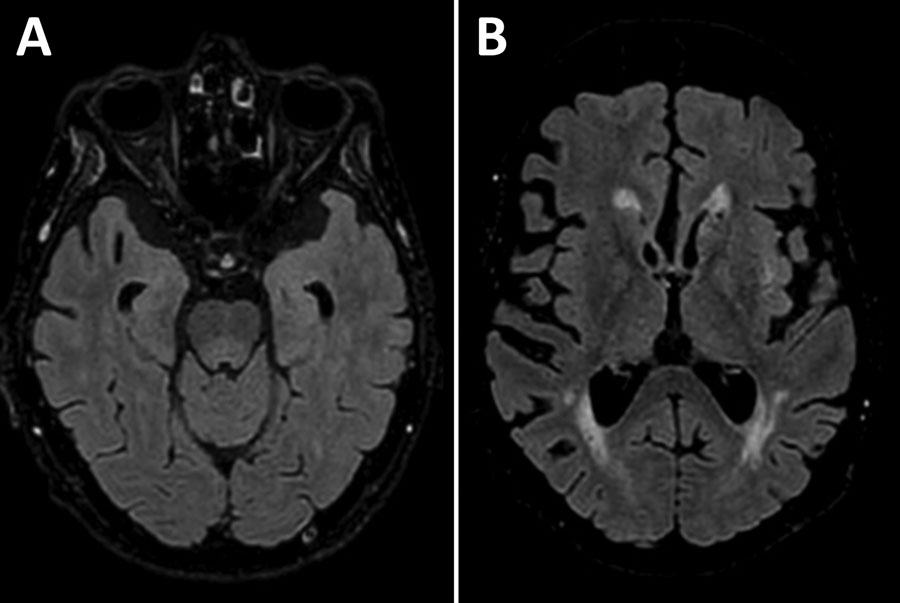Volume 29, Number 3—March 2023
Dispatch
New Detection of Locally Acquired Japanese Encephalitis Virus Using Clinical Metagenomics, New South Wales, Australia
Figure 1

Figure 1. Axial FLAIR magnetic resonance imaging brain sequence in a patient with locally acquired Japanese encephalitis virus detected using clinical metagenomics, New South Wales, Australia. A) Equivocal hyperintensity in the dorsal midbrain and pons; B) sparing of the thalamus and basal ganglia.
1All authors contributed equally to this article.
Page created: January 12, 2023
Page updated: February 20, 2023
Page reviewed: February 20, 2023
The conclusions, findings, and opinions expressed by authors contributing to this journal do not necessarily reflect the official position of the U.S. Department of Health and Human Services, the Public Health Service, the Centers for Disease Control and Prevention, or the authors' affiliated institutions. Use of trade names is for identification only and does not imply endorsement by any of the groups named above.